See Your Nails To Know All About your Health
Note: Friends, if you are comfortable in reading this article in any other language, please change the language from the translate button on the top of this article.
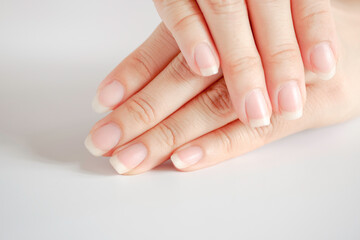 |
| In general, healthy nails should be a shade of pink or beige, with a white half-moon shape at the base of the nail known as the lunula |
Overview
Our nails can reveal a lot about our overall health. If you want to know about your health, see your nails.
Normal nails are typically smooth, evenly colored, and free of ridges or grooves.
They should be strong and flexible, with a slight curvature that matches the shape of the finger or toe.
The color of normal nails can vary depending on factors such as skin tone, age, and genetics.
In general, healthy nails should be a shade of pink or beige, with a white half-moon shape at the base of the nail known as the lunula.
Normal nails should also be free of any deformities, such as bumps or ridges.
What Do Your Nails Tell You About Your Health?
Please see the above video for reference.
- You should always observe your nails. Your nails may give you early signs or warning about an illness.
- Healthy nails are smooth, without any pits or grooves, and are uniform in color and consistency.
- White nails may be a sign of some liver problem or hepatitis problem.
- Pale nails may be a sign of anemia, malnutrition, iron deficiency, or liver or heart problem.
- Yellow nails may be due to a fungal infection, some other serious condition, or respiratory disease.
- Bluish nails may indicate some lung or heart problem or lack of oxygen intake.
- Rippled nails with pitted surface may be early signs of psoriasis or inflammatory arthritis.
- Cracked or split nails may be a sign of thyroid.
- Puffy nails and red skin around nails shows some nail inflammation or infection or tissue disorder.
- Terry's nails are mainly white while tips are narrow pink and indicate a serious condition like liver disease, heart failure, or diabetes.
- Beau's lines are dented lines that run across nails and indicate high fever, pneumonia, measles, peripheral vascular disease, or zinc deficiency.
- Spoon nails or koilonychia are scooped like spoons and give signs of iron deficiency, anemia or liver problem.
Ayurvedic Home Remedies For Problems Indicated By Nails:
There are several different types of nails that can appear on the hands and feet. Here are some common nail types and what they may indicate:
White spots on nails:
These are small, white spots that can appear on the nails. Contrary to popular belief, they are not usually a sign of a nutrient deficiency. Rather, they are typically caused by minor injuries to the nail bed.
Remedies:
Here are a few Ayurvedic home remedies that may help with white spots on nails:
Coconut oil massage:
Massaging coconut oil into your nails can help to nourish and strengthen them, as well as promote healthy growth.
Simply warm up some coconut oil and massage it into your nails and cuticles for a few minutes each day.
Lemon juice:
Mix equal parts lemon juice and water, and soak your nails in the mixture for 10-15 minutes each day.
Neem oil:
Apply neem oil to your nails and cuticles each day to help promote healthy nail growth.
Turmeric paste:
Mix turmeric powder with water to create a paste, and apply it to your nails for 10-15 minutes each day.
Amla juice:
Drink a glass of amla juice each day to help nourish your nails from the inside out.
Brittle nails:
 |
| Nails that are brittle or weak can indicate a lack of moisture or low levels of biotin, vitamin C, or iron |
Nails that are brittle or weak can indicate a lack of moisture or a nutrient deficiency, such as low levels of biotin, vitamin C, or iron.
Remedies:
Here are a few Ayurvedic home remedies that may help with brittle nails:
Sesame oil massage:
Simply warm up some sesame oil and massage it into your nails and cuticles for a few minutes each day.
Almond oil:
Apply almond oil to your nails and cuticles each day to help promote healthy nail growth.
Triphala powder:
Mix Triphala powder with water to create a paste, and apply it to your nails for 10-15 minutes each day.
Ghee:
Apply Pure Ghee (Indian name desi ghee) to your nails and cuticles each day to help promote healthy nail growth.
Neem oil:
Apply neem oil to your nails and cuticles each day to help promote healthy nail growth.
Yellow nails:
Nails that are yellow or brownish in color can indicate a fungal infection, a respiratory condition such as chronic bronchitis, or an underlying medical condition such as thyroid disease or diabetes.
Remedies:
Here are a few Ayurvedic home remedies that may help with yellow nails:
Lemon juice:
Mix equal parts lemon juice and water, and soak your nails in the mixture for 10-15 minutes each day.
Baking soda:
Mix baking soda with water to create a paste, and use a soft-bristled brush to gently scrub your nails for a few minutes each day.
Tea tree oil:
Apply tea tree oil to your nails and cuticles each day to help promote healthy nail growth.
Turmeric paste:
Mix turmeric powder with water to create a paste, and apply it to your nails for 10-15 minutes each day.
Apple cider vinegar:
Mix equal parts apple cider vinegar and water, and soak your nails in the mixture for 10-15 minutes each day.
Spoon-shaped nails:
Nails that are concave, or curved inward like a spoon, can be a sign of iron-deficiency anemia, hemochromatosis (a condition in which the body absorbs too much iron), or Raynaud's disease (a condition that affects blood flow to the fingers and toes).
Remedies:
Here are a few Ayurvedic home remedies that may help with spoon-shaped nails:
Iron-rich foods:
If your spoon-shaped nails are caused by iron deficiency anemia, it's important to increase your intake of iron-rich foods.
Some examples include spinach, lentils, tofu, and fortified cereals.
Triphala powder:
Mix Triphala powder with water to create a paste, and apply it to your nails for 10-15 minutes each day.
Coconut oil massage:
Simply warm up some coconut oil and massage it into your nails and cuticles for a few minutes each day.
Neem oil:
Apply neem oil to your nails and cuticles each day to help promote healthy nail growth.
Amla juice:
Mix amla juice with water and drink it each day to help improve the health of your nails.
Clubbed nails:
Nails that are thickened and curved over the fingertips, known as clubbed nails, can indicate a lung or heart condition, such as lung cancer or heart disease.
Remedies:
Here are some Ayurvedic home remedies for clubbed nails:
Garlic:
Crush a few garlic cloves and apply the paste on the affected nails. Leave it on for 15-20 minutes before washing it off with warm water.
Ginger:
Grate a small piece of ginger and apply the paste on the affected nails. Leave it on for 10-15 minutes before washing it off with warm water.
Lemon:
Cut a lemon in half and rub it on the affected nails for a few minutes. Rinse with warm water and pat dry.
Neem:
Crush a handful of neem leaves and apply the paste on the affected nails. Leave it on for 15-20 minutes before washing it off with warm water.
Mustard oil:
Mustard oil has anti-inflammatory properties and can help improve blood circulation. Massage the affected fingertips with warm mustard oil for a few minutes every day.
It is important to consult a healthcare provider for proper diagnosis and treatment of clubbed nails, as they may indicate an underlying medical condition.
Beau's lines:
These are horizontal ridges that run across the nail. They can occur after an illness or injury, as well as during chemotherapy treatment.
Remedies:
Here are some Ayurvedic home remedies for Beau's lines:
Aloe vera:
Apply fresh aloe vera gel on the affected nails and massage for a few minutes. Leave it on for 15-20 minutes before washing it off with warm water.
Bitter gourd:
Drink bitter gourd juice daily or apply fresh bitter gourd juice on the affected nails.
Indian gooseberry or Amla:
Crush a few amla berries and apply the paste on the affected nails. Leave it on for 10-15 minutes before washing it off with warm water.
Sesame oil:
Sesame oil has moisturizing properties and can help keep the nails hydrated. Massage the affected nails with warm sesame oil for a few minutes every day.
Turmeric:
Mix turmeric powder with water to make a paste and apply it on the affected nails. Leave it on for 10-15 minutes before washing it off with warm water.
Pitted Nails:
This is a condition in which small pits or depressions appear on the nail surface. It can be a sign of psoriasis or another skin condition.
Remedies:
Here are a few Ayurvedic home remedies that may help with nail pitting:
Aloe vera gel:
Apply aloe vera gel to your nails and cuticles each day to help reduce the appearance of nail pits.
Neem oil:
Apply neem oil to your nails and cuticles each day to help promote healthy nail growth.
Turmeric paste:
Mix turmeric powder with water to create a paste, and apply it to your nails for 10-15 minutes each day.
Triphala powder:
Mix triphala powder with water to create a paste, and apply it to your nails for 10-15 minutes each day.
Coconut oil massage:
Simply warm up some coconut oil and massage it into your nails and cuticles for a few minutes each day.
Our Other Must-Read Articles:
Onycholysis:
This is a condition in which the nail separates from the nail bed and turns white or yellow. It can be caused by an injury or infection, as well as underlying medical conditions such as thyroid disease, psoriasis, or fungal infections.
Remedies:
Here are a few Ayurvedic home remedies that may help with onycholysis:
Apple cider vinegar soak:
Soak your affected nails in a mixture of apple cider vinegar and warm water for 10-15 minutes each day.
Tea tree oil:
Apply tea tree oil to the affected nails each day to help reduce inflammation and promote healing.
Neem oil:
Apply neem oil to the affected nails each day to help reduce inflammation and promote healing.
Garlic:
Crush a few garlic cloves and apply the paste to the affected nails for 10-15 minutes each day.
Turmeric paste:
Mix turmeric powder with water to create a paste, and apply it to the affected nails for 10-15 minutes each day.
Muehrcke's lines:
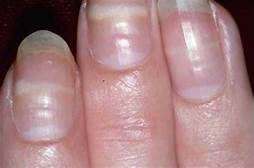 |
| These are white, horizontal lines that run across the nail bed |
These are white, horizontal lines that run across the nail bed. They can be a sign of low levels of protein in the blood, liver disease, or kidney disease.
Remedies:
Here are a few Ayurvedic home remedies that may help with Muehrcke's lines:
Increase protein intake:
Muehrcke's lines can be caused by protein deficiency. Eating a diet rich in protein can help to promote healthy nail growth. Good sources of protein include lentils, beans, nuts, seeds, and lean meats.
Biotin supplement:
Biotin is a B-vitamin that is important for healthy nail growth. Taking a biotin supplement may help to strengthen the nails and reduce the appearance of Muehrcke's lines.
Coconut oil:
Apply coconut oil to the nails each day to help reduce the appearance of Muehrcke's lines.
Aloe vera gel:
Apply aloe vera gel to the nails each day to help reduce the appearance of Muehrcke's lines.
Neem oil:
Apply neem oil to the nails each day to help reduce the appearance of Muehrcke's lines.
Terry's nails:
Nails that are mostly white with a narrow band of pink at the tip, known as Terry's nails, can be a sign of liver disease, kidney failure, or congestive heart failure.
Remedies:
Here are a few Ayurvedic home remedies that may help with Terry's nails:
Increase hydration:
Staying hydrated is important for healthy nail growth. Drinking plenty of water and other fluids can help to prevent dryness and promote healthy nail growth.
Increase protein intake:
Eating a diet rich in protein can help to promote healthy nails. Good sources of protein include lentils, beans, nuts, seeds, and lean meats.
Biotin supplement:
Taking a biotin supplement may help to strengthen the nails and reduce the appearance of Terry's nails.
Olive oil:
Apply olive oil to the nails each day to help reduce the appearance of Terry's nails.
Garlic:
Crush a few garlic cloves and apply the paste to the affected nails for 10-15 minutes each day.
Half-and-half nails:
 |
| Half-and-half nails can be a sign of kidney disease, liver disease, or an autoimmune condition such as lupus. |
Also known as Lindsay's nails, these are nails that are partly white and partly pink or brown. They can be a sign of kidney disease, liver disease, or an autoimmune condition such as lupus.
Remedies:
Here are a few Ayurvedic home remedies that may help with half-and-half nails:
Increase hydration:
Staying hydrated is important for healthy nail growth. Drinking plenty of water and other fluids can help to prevent dryness and promote healthy nail growth.
Increase protein intake:
Eating a diet rich in protein can help to promote healthy nails. Good sources of protein include lentils, beans, nuts, seeds, and lean meats.
Biotin supplement:
Taking a biotin supplement may help to strengthen the nails and reduce the appearance of half-and-half nails.
Lemon juice:
Soak the affected nails in lemon juice for 10-15 minutes each day.
Tea tree oil:
Apply tea tree oil to the nails each day to help reduce the appearance of half-and-half nails.
Nail bed infection:
Infections of the nail bed can cause redness, swelling, and pain around the nail. They can be caused by bacteria, viruses, or fungi.
Remedies:
Ayurveda, a traditional system of medicine from India, offers various home remedies for nail bed infections. Here are some of them:
Neem oil:
Apply a few drops of neem oil to the infected nail bed and surrounding area and let it soak in for about 30 minutes before washing it off.
Turmeric paste:
Mix some turmeric powder with water to make a paste and apply it to the infected nail bed. Leave it on for 20-30 minutes before washing it off.
Tea tree oil:
Tea tree oil has powerful antifungal properties that can help treat nail bed infections. Dilute a few drops of tea tree oil in a carrier oil like coconut or olive oil and apply it to the affected nail bed.
Leave it on for at least 30 minutes before washing it off.
Garlic:
Crush a few garlic cloves and mix them with olive oil. Apply the mixture to the infected nail bed and let it sit for 30 minutes before washing it off.
Apple cider vinegar:
Mix equal parts of apple cider vinegar and water and soak the infected nail bed in the solution for 15-20 minutes. Rinse it off and pat dry.
Ingrown Toenails:
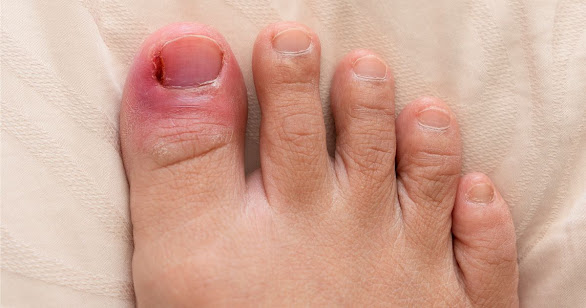 |
| Ingrown toenails occur when the edge of the toenail grows into the skin, causing pain, swelling, and redness |
Ingrown toenails occur when the edge of the toenail grows into the skin, causing pain, swelling, and redness.
Home Remedies:
Here are a few Ayurvedic home remedies that may help with ingrown toenails:
Warm water soak:
Soaking your foot in warm water can help to reduce pain and swelling associated with ingrown toenails. Add a few drops of essential oil, such as tea tree oil or neem oil, to the water to help promote healing.
Epsom salt soak:
Add a few tablespoons of Epsom salt to a foot bath and soak your feet for 20-30 minutes each day.
Turmeric paste:
Mix turmeric powder with water to create a paste, and apply it to the affected toenail for 10-15 minutes each day.
Neem oil:
Neem oil is a natural antifungal and antibacterial agent that can help to prevent infection and promote healing. Apply neem oil to the affected toenail each day to help reduce inflammation and promote healthy nail growth.
Cut toenails properly:
Cutting your toenails properly can help to prevent ingrown toenails from occurring. Cut your toenails straight across, and avoid cutting them too short or rounding the edges.
Please note that these home remedies may help to relieve symptoms associated with nail problems, it's important to remember that severe or persistent cases may require medical intervention.
Overall, while our nails can provide clues about our health, nail changes are not always indicative of an underlying condition.
If you have concerns about your ingrown toenail or notice any signs of infection, it's best to consult a healthcare professional.
Friends, Stay Fit, Stay Happy
----------------------------------------------------------------------------
Friends, if you liked it, please share it with your friends.
SHARING IS CARING.
Compiled by: Paramjit Singh Rana

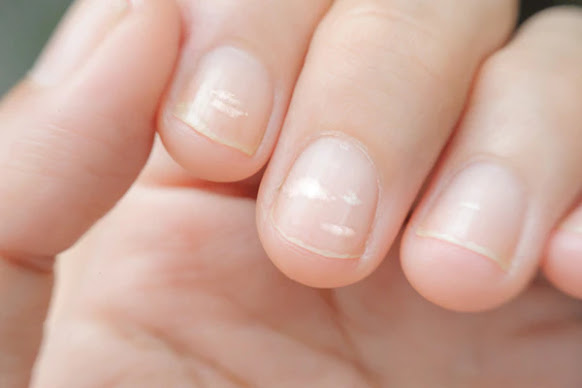

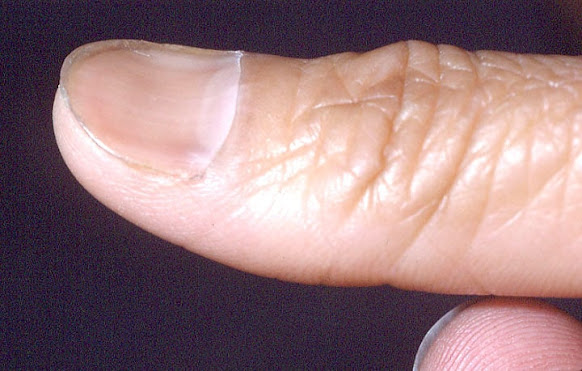



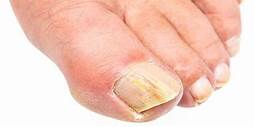

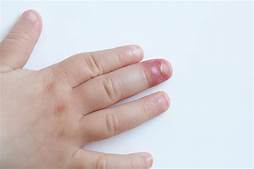
Comments
Post a Comment